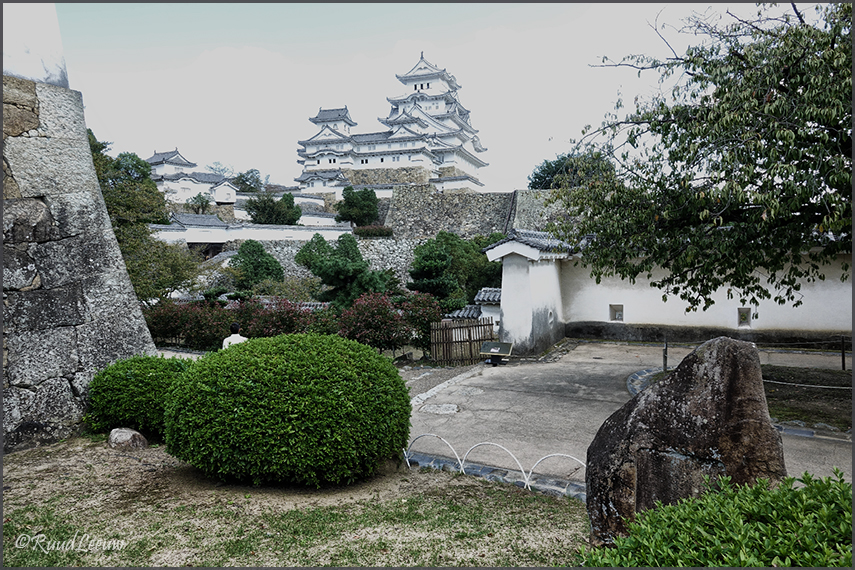HIMEJI CASTLE

It took me a while to get familiar with the public transport system, though every effort seems to have been made
to make it user friendly for non-Japanese. Such as a button here for an English menu.
The plethora of signs in
train stations is confusing
but English names are most often to be found, one just has to get accustomed to all
the signs, lines and colours. It is the same for the metro. The public adress in the trains is also often in English.

Off on daytrip to Himeji Castle. I was still coping with the jetlag, so a half day outing seemed appropriate.
Distances shrivel while travelling on the Shinkansen hi-speed train.
We made good use of the Japan Rail pass.
"The JR Pass is the ideal travel solution and the best way to discover Japan by train. Economical and simple to use, the JR Pass gives you access to the JR network nationwide and is a lot cheaper than buying individual train tickets."
It seems good value for money, though I have to confess I did not compare prices. It was mostly the ease of travel that prompted me to buy a pass for 2 weeks.
Upon payment I received vouchers which we presented in Osaka and in return we received the actual passes.
More details on this website: www.japan-rail-pass.com/jr-pass |

In the ticket office of Japan Rail one can make seat reservations for the Shinkansen. Long lines at the counter
or 'fully booked' status also made us choose the non-reservation compartments in the Shinkansen. But that meant we
sometimes had to stand, waiting for a seat to become available. Sometimes there was free wifi available, not always.

 .
.
Himeji Castle is a hilltop Japanese castle complex, situated in the city of Himeji which is located in the Hyōgo Prefecture of Japan.
The castle is regarded as the finest surviving example of prototypical Japanese castle architecture, comprising a network of 83 rooms with advanced defensive systems from the feudal period.
Himeji castle is frequently known as 'White Egret Castle' or 'White Heron Castle', because of its brilliant white exterior and supposed (!) resemblance to a bird taking flight...
Himeji Castle dates back to to 1333, but in subsequent centuries has been rebuilt, remodeled and expanded many times. But for over 400 years now, Himeji Castle has remained intact, even throughout the extensive bombing of Himeji in World War II and natural disasters, such as the 1995 Great Hanshin earthquake.
en.wikipedia.org:_Himeji_Castle
|

Even before entering the actual castle there is a gradual climb, approaching the castle in a half circle.


I was disappointed to see all the
rooms on every floor empty, without any effort for decoration.
We shuffled on our socks, as visitors had to leave the shoes at the entrance.


An insight in the building of this castle.





I concluded that Himeji Castle is best enjoyed from the outside.
-+-

Popular with school excursions

Now that's better than graffiti

We went looking for lunch; this isn't so easy if one likes to sit down and this situation played on my mood during
this trip. But this location in a
backstreet, almost invisible from the main street, was a delightful place.
-+-

Hyogo Prefectural Museum of History

We found little of interest explained here in English

-+-

The streets here are of little interest, I guess I expected it to be picturesque like Kyoto and Tokyo

There is a large covered shopping mall that also leads back to the trainstation. Little of interest here for me.

I did like the displays on the ground of the covered market.
One of the books I bought had prints by Utagawa Hiroshige (1797-1858); the traditional illustrations of
those days continue to hold with a unique fascination, equally so
the modern illustrations of today.
en.wikipedia.org:_Hiroshige


Not much to learn from this table, except that we were on the right track for Tokyo.
Shin-Osaka was our stop to transfer to the subway network.
 Photos © Ruud Leeuw
Photos © Ruud Leeuw



